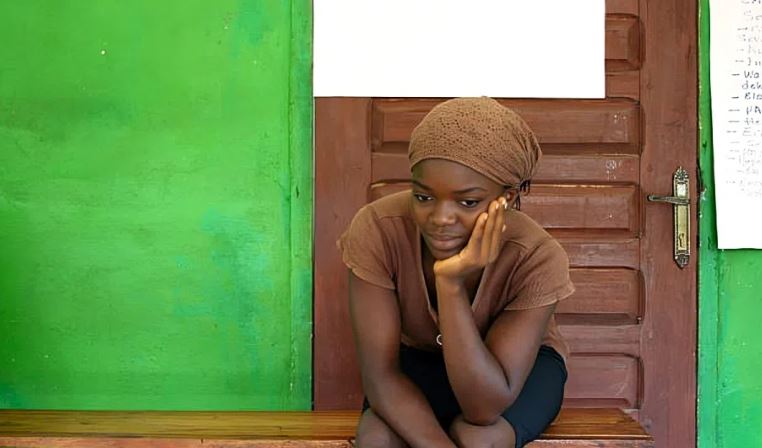The AIDS Healthcare Foundation (AHF) Nigeria recently reported that about 4,000 young women aged 15 to 24 get infected with Human Immunodeficiency Virus (HIV) every week around the world.
Most of these new cases happen in sub-Saharan Africa, where the crisis is reported to be most severe.
This alarming statistic highlights a critical public health crisis, with adolescent girls and young women being most affected by HIV infection. These figures scream the social and economic consequences for individuals and communities, as the epidemic threatens the future health, educational attainment, and socioeconomic prospects of this demographic.
Immediate and targeted interventions must be put in place to reduce the ongoing risks and to address the leading factors causing this infection among young women.
Why Young Women Are Most at Risk of HIV
Biologically, young women are more prone to HIV infection due to the fragile nature of the genital tract and the presence of untreated sexually transmitted diseases. But beyond biology, social and economic realities also increase their risk.
According to a research study, many young women engage in relationships with older men who are more likely to be living with HIV. And the power imbalance in such relationships often rids these women of the ability to negotiate safe sex or even insist on the use of protection.
Poverty is likely the leading factor and plays a significant role in this issue. Some young women turn to transactional sex to pay for school, food, or other essentials. Also, there is a strong stigma around sexual health.
There is a lack of enough youth-friendly clinics and centres, and the little to no use of prevention tools like PrEP – pre-exposure prophylaxis, a medicine people at risk for HIV take to prevent getting infected from sex or injection drug use – explains why young women are overly affected.
How Are Young Women Getting Infected with HIV?
The question of how people get HIV is not a mystery. But for young women, the patterns have shown for years now that serious social, economic, and health problems put them at more risk. Here are five ways young women contract HIV.
According to the 2022 Global AIDS Update by UNAIDS, it states that “in many countries, young women are acquiring HIV at rates several times higher than their male peers, often due to relationships with older men who are more likely to be living with HIV.”
Oftentimes, protection is not used, sometimes due to carelessness, ignorance or other reasons that leave them at risk of infection.
2. Transactional relationships born out of poverty
For many girls, survival depends on what they receive in exchange for intimacy. This form of transactional sex is rarely safe. The urgency of need means that protection and negotiation are secondary to both parties involved in the act, and the end result of that is more often than not exposure to HIV.
3. Limited access to prevention tools
Across the world, condoms remain one of the most effective barriers against HIV, yet access and consistent use are far from guaranteed. In some places, condoms are scarce, expensive, or stigmatised.
However, there are countries like Namibia, where government-initiated programmes successfully increased condom distribution, leading to higher usage rates among the youth.
Even in South Africa, awareness campaigns have improved knowledge and uptake of PrEP. But despite these programmes, in many high-risk areas, young women still face obstacles in accessing these preventive tools due to cost, stigma, and lack of awareness.
4. Sexual violence and coercion
More often than they should be, young women are exposed to sexual abuse or forced sex. These are situations where they have no control over what happens to their bodies. These encounters are not only traumatic but also biologically risky for them, as forced intercourse often leads to injuries that increase the chances of HIV transmission.
5. Untreated sexually transmitted infections (STIs)
Sexually Transmitted Infections like gonorrhoea, chlamydia, and herpes are common among sexually active youth, but many go untreated due to stigma or lack of healthcare access. These infections cause inflammation and lesions that make it easier for HIV to enter the body during sex.
According to the World Health Organisation (WHO), 1.3 million people acquired HIV globally in 2023. And in sub-Saharan Africa, women and girls account for over 60% of new HIV infections. In 2023, Nigeria recorded 75,000 new HIV infections and 45,000 HIV related deaths.
This further proves that if young women are not at the centre of prevention strategies, the battle against HIV will not be won.
For many girls who contract HIV, stigma is immediate and cruel. They are judged, isolated, and sometimes forced to drop out of school. Their chances of accessing higher education, employment, and even supportive relationships drastically reduce. And if left untreated, the virus can lead to AIDS, destabilising their health and most times cutting their lives short.
The damage also extends to communities and economies. When thousands of young women are lost to HIV each week, societies lose caregivers, future mothers, entrepreneurs, and leaders.
For example, research has shown that countries heavily affected by HIV, such as those in sub-Saharan Africa, experience a significant reduction in GDP growth due to the loss of a productive workforce and increased healthcare costs. We can all agree that HIV is not just a health issue, but a development crisis.
AHF’s warning should not be seen as a call for awareness but a demand for action. And so, for this not to get out of hand, intervention targeted towards the infected must be well planned, realistic and more importantly, sustained.
-
- Governments must put their money where their commitments are: There is global funding for HIV programmes, but the needs remain urgent. Nigeria and other high-burden countries must increase domestic funding for HIV prevention and treatment, ensuring that young women are not left behind. Engaging media outlets to disseminate narratives widely can also help amplify the call for more conversations on HIV prevention and treatment programmes.
Prevention must be prioritised: Tools like PrEP have been proven effective but remain largely underutilised among young women due to a lack of awareness and stigma. Even condoms, which are more popular, are not easily accessible in some places. Widespread education campaigns, coupled with assured confidential and women-friendly services, can make a huge difference.
- Empowerment is non-negotiable: Keeping girls in school has been shown to significantly reduce HIV risk, not just by increasing knowledge but by giving them opportunities that make them less vulnerable to exploitation. Economic empowerment programmes, vocational training, and social protection schemes can provide better alternatives to transactional sex.
- The conversation around gender-based violence and inequality must be addressed: Many infections stem from environments where women cannot freely make choices about their own bodies. Ending intimate partner violence, challenging harmful norms, and creating safe spaces for young women to speak up are essential steps in winning this fight.
A Shared Responsibility
The responsibility of curbing this does not lie solely with governments and organisations. Parents and educators should educate children by providing accurate information about sexual health.
Religious and community leaders should use their influence to break down stigma instead of reinforcing silence. Men and boys must also be engaged as partners in promoting safe sex practices and gender equality.
The truth is, HIV among both genders is preventable. The tools exist, the knowledge is available, and there are success stories from countries where innovative programmes have been implemented. The real question is whether there is enough preparation in place to save the next generation of young women.
The fight against HIV should not only be about medicine. If the world is serious about ending HIV/AIDS as a public health threat by 2030, the focus must shift to saving adolescent girls and young women.
Related




















